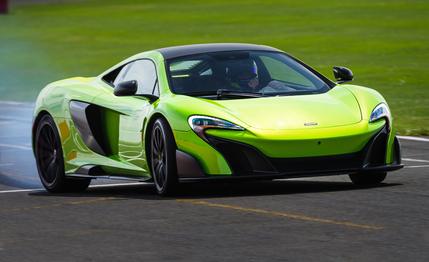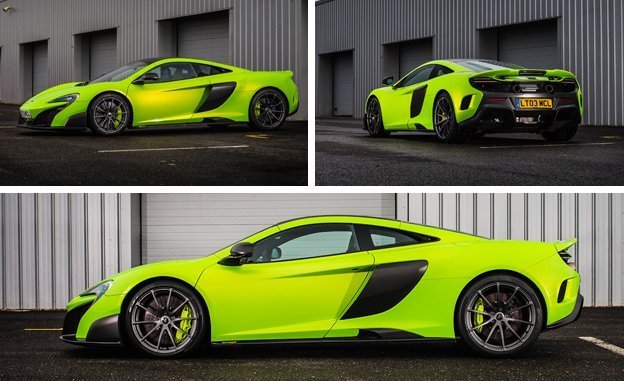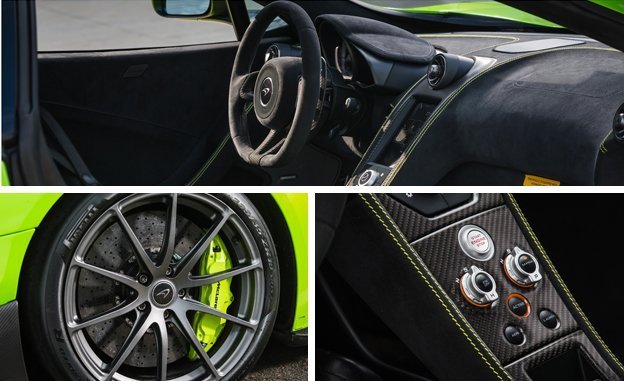 First Drive Review
First Drive Review
This is a great time to be a billionaire gearhead, no question. Manufacturers are practically tripping over each other to bring their adjective-stretching hypercars to market, complete with their four-figure power outputs and seven-digit price tags. This is a golden era for those with bottomless pockets and an urge to go very, very quickly.
But what about those who are fractionally further down the pyramid, the unlucky ones who find they can’t quite crack the 1 percent of the 1 percent? These are the guys who can’t stretch to a McLaren P1 or a Porsche 918, but who don’t want to be stuck with one of the same entry-level supercars that their lawyers and chiropractors drive. All together now: Won’t somebody think of these multimillionaires?
McLaren has, with the new 675LT. The $350,000-plus sticker is still some ways short of affordability for most of us, but it looks like an outrageous bargain next to a $1.15 million McLaren P1. Because after driving the LT both on the track and on the road we can confirm that, despite costing less than a third as much as its hybrid sibling, it’s at least 97 percent as exciting to drive flat-out.
One obvious problem to start: You can’t actually buy a 675LT, at least not from McLaren. The entire global production run of 500 already has sold out, with fewer than 180 of those likely to come to the United States. And those fortunate folks will find themselves owning what we predict will be one of this season’s hottest automotive tickets.

The 675LT is a spectacular example of overcompensation, a lightened and tightened response to the criticism that was leveled at the original McLaren MP4-12C’s relative lack of excitement. The 650S addressed that to an extent, but it’s the LT that shows just how far the common mechanical package that underpins all of McLaren’s current models can be taken in the direction of sweaty-palmed thrills. Nobody will ever accuse it of being too refined or dynamically aloof—indeed, it’s probably slightly more exciting than aerial combat.
LT stands for Long Tail, a reference to the evolved version of the McLaren F1 that was built to keep it at the sharp end of 1990s sports-car racing after rivals responded to its first surprise victory at Le Mans. Despite that, the 675LT is barely any bigger than the 650S (its length grew by only 1.3 inches), although it does have a redesigned back end and that irresistibly motorsport-grade polycarbonate engine cover. This and the other exterior modifications have mostly been done to improve aerodynamics, with more-aggressive diffusers front and rear as well as new end plates on the front bumper steering air into a new side channel. We’re told the 675LT produces 40 percent more downforce than the 650S and significantly improved engine cooling. The biggest visual difference at the back is the arrival of twin, howitzer-grade tailpipes made from a titanium alloy that turns blue after hard use.
The quest to trim weight has brought out McLaren’s innate tendency toward obsessive compulsion like nothing else. The claimed total savings are an impressive 220 pounds versus the 650S coupe, and that’s come by shaving mass from what is already the lightest car in its segment. Yes, there’s more carbon fiber, but you’ve got to love a company that switches to titanium wheel bolts to save 1.4 ounces on each one, a cumulative reduction of just 1.8 pounds across the whole car. The 10-spoke, forged-aluminum wheels are also 1.8 pounds lighter—total—than the optional lightweight ones on the 650S, and the carbon-framed seats save a combined 33 pounds. Both air conditioning and an adjustable passenger seat are no-cost options; the only way you’ll get the lightest possible 675LT is by foregoing both.

Not that the cabin feels like the hermit’s cave you might be expecting. There’s more carbon and microsuede, but otherwise it feels very similar to that of the 650S; the only noticeable equipment loss is the disappearance of the door-mounted climate controls (those functions are now handled by the central touch screen). The instrument display and central console are the same as in the 650S, with Normal, Sport, and Track modes for both the suspension and powertrain settings. There’s also a new Dynamic mode for the stability control, as well as the option—for the brave, foolhardy, and well-insured—to turn it fully off.
Any suspicion that the 675LT is just an expensive 650S with every carbon-fiber option checked lasts no further than the first half-mile of driving. It’s a very different beast, one with a core that’s much harder and a heart that’s much blacker. The ride quality, for instance, feels like a session with a seasoned dominatrix, when compared with the well-damped compliance of the standard 650S. McLaren had carefully picked out some of the smoothest roads in the south of England as part of the official drive route, but we used local knowledge to find some more typically crenelated British tarmac. At low speeds the LT feels very firm, even with the dampers left in their softest mode. The good news is that the chassis gets better as you add speed. It doesn’t find more compliance, but the body control is outstanding over rougher surfaces and the resistance to roll under cornering is almost total.